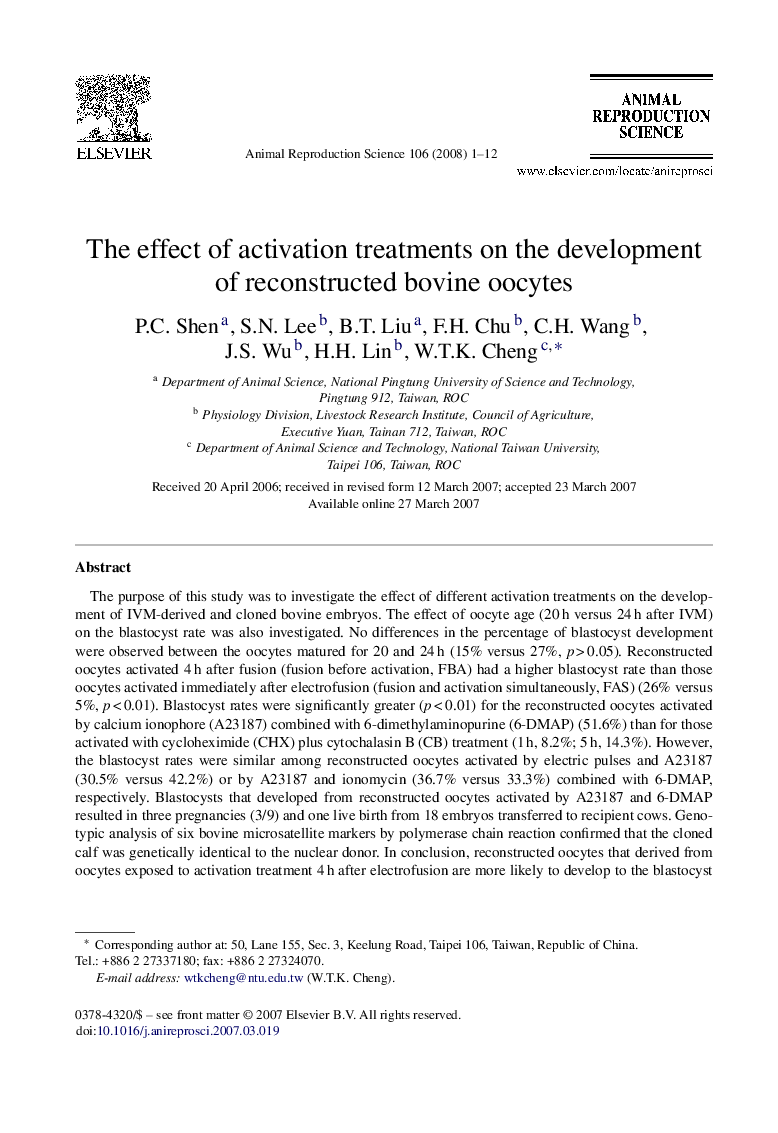| Article ID | Journal | Published Year | Pages | File Type |
|---|---|---|---|---|
| 2074277 | Animal Reproduction Science | 2008 | 12 Pages |
Abstract
The purpose of this study was to investigate the effect of different activation treatments on the development of IVM-derived and cloned bovine embryos. The effect of oocyte age (20 h versus 24 h after IVM) on the blastocyst rate was also investigated. No differences in the percentage of blastocyst development were observed between the oocytes matured for 20 and 24 h (15% versus 27%, p > 0.05). Reconstructed oocytes activated 4 h after fusion (fusion before activation, FBA) had a higher blastocyst rate than those oocytes activated immediately after electrofusion (fusion and activation simultaneously, FAS) (26% versus 5%, p < 0.01). Blastocyst rates were significantly greater (p < 0.01) for the reconstructed oocytes activated by calcium ionophore (A23187) combined with 6-dimethylaminopurine (6-DMAP) (51.6%) than for those activated with cycloheximide (CHX) plus cytochalasin B (CB) treatment (1 h, 8.2%; 5 h, 14.3%). However, the blastocyst rates were similar among reconstructed oocytes activated by electric pulses and A23187 (30.5% versus 42.2%) or by A23187 and ionomycin (36.7% versus 33.3%) combined with 6-DMAP, respectively. Blastocysts that developed from reconstructed oocytes activated by A23187 and 6-DMAP resulted in three pregnancies (3/9) and one live birth from 18 embryos transferred to recipient cows. Genotypic analysis of six bovine microsatellite markers by polymerase chain reaction confirmed that the cloned calf was genetically identical to the nuclear donor. In conclusion, reconstructed oocytes that derived from oocytes exposed to activation treatment 4 h after electrofusion are more likely to develop to the blastocyst stage. The best treatment to activate reconstructed bovine oocytes in this study was A23187 combined with 6-DMAP.
Related Topics
Life Sciences
Agricultural and Biological Sciences
Animal Science and Zoology
Authors
P.C. Shen, S.N. Lee, B.T. Liu, F.H. Chu, C.H. Wang, J.S. Wu, H.H. Lin, W.T.K. Cheng,
